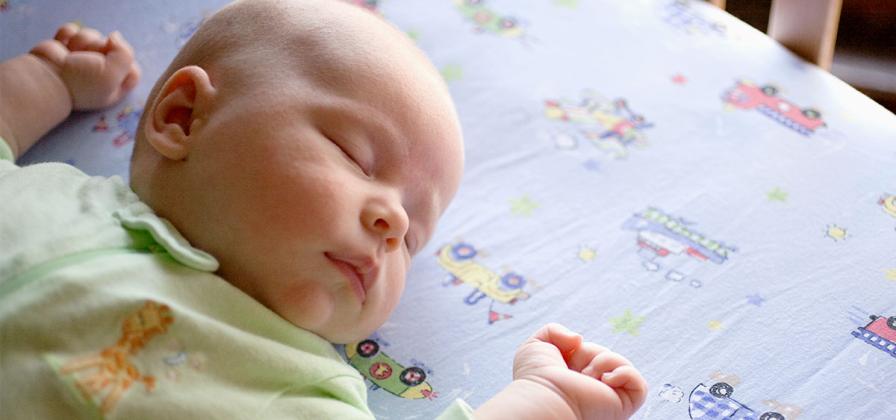According to the American Academy of Pediatrics, Sudden Unexpected Infant Death (SUID), which includes Sudden Infant Death Syndrome (SIDS), is the leading cause of injury death in infancy. You can help reduce the risk of SUID fatalities by learning the ABCs of Safe Sleep.
Babies sleep safest
Alone.
- Place infants on their backs for sleep in their own sleep space with no other people.
- Share the room, not your bed. Do not sleep or nap with your baby in a bed, couch or chair.
- Keep soft objects, toys, stuffed animals and loose bedding out of your baby's sleep area.
- Don't let your baby get overheated. Keep the temperature comfortable for a lightly clothed adult.
- Don't put a hat on your baby while indoors once you're home from the hospital.
On their Back.
- Put your baby on their back for all naps and at night.
- Your baby's anatomy and gag reflex will keep them from choking if they spit up.
- Once your baby is comfortable rolling from back to tummy and from tummy to back, they no longer need to be repositioned.
- Dress your baby in layers of clothing or use a wearable blanket. In general you should dress your baby in only one layer more than you're wearing.
- Avoid swaddling once your baby starts to roll over (usually around 3 months of age).
In their Crib.
- Place your baby in a crib, bassinet, portable crib or play yard that meets current safety standards.
- If a baby falls asleep in a car seat, stroller, swing, infant carrier or sling, move them to their regular sleep space as soon as possible.
- Do not use wedges, baby positioners or co-sleeping products.
- Use a firm sleep surface, such as a mattress designed for your specific crib and that it fits tightly, covered by a fitted sheet.
- Do not use pillows, blankets or crib bumpers anywhere in your baby's sleep area.
- Do not use weighted blankets, sleepers, swaddles or other weighted objects on or near your baby.
En Español
Safe Sleep Champion
The Louisiana Department of Health and Hospitals, Bureau of Family Health, named Woman's Hospital a “Safe Sleep Champion” for its efforts in reducing the rate of Sudden Infant Death Syndrome (SIDS).
